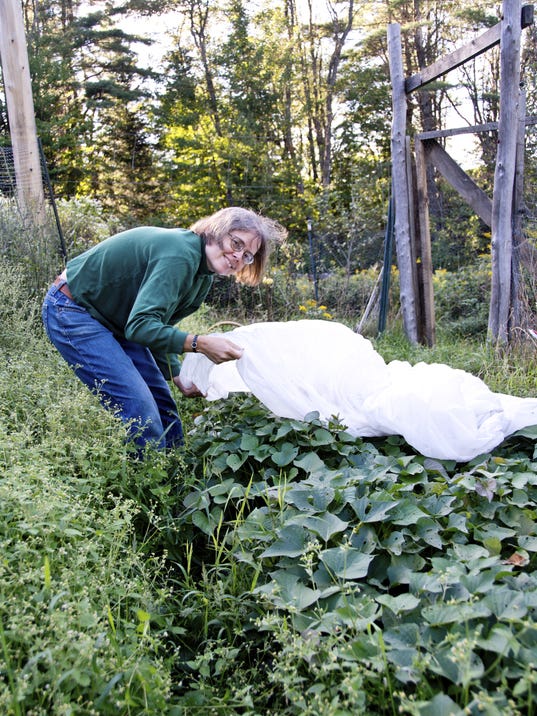Frost and Cold Protection
Frost is the enemy of most flowers and some leaves. A dusting of frost can kill blossoms and even the leaves of many kinds of plants. Frost forms on surfaces when the temperature goes below water’s freezing point of 32°F (0°C). Note that the temperature at ground level and on plant surfaces can be below freezing even while the air temperature several feet above ground is above freezing.
 Frosty Burford Holly
Obviously, plants vary in their cold tolerance, and some can tolerate extreme freezing, while others suffer when we gardeners have to pull a sweater on. Many kinds of plants can tolerate hard freezes, but their blossoms are killed by frost, and then they will not produce fruit that year. You need to know the cold tolerance of your plants in order to prepare for a freeze or frost.
Frosty Burford Holly
Obviously, plants vary in their cold tolerance, and some can tolerate extreme freezing, while others suffer when we gardeners have to pull a sweater on. Many kinds of plants can tolerate hard freezes, but their blossoms are killed by frost, and then they will not produce fruit that year. You need to know the cold tolerance of your plants in order to prepare for a freeze or frost.
 Covering an outdoor plant with a sheet, blanket, or frost cloth can protect the blossoms from frost forming on them. However, such a covering by itself, does NOT protect plants against freezing, which can kill some kinds of plants and cause leaf drop in others. Plants give off very little heat, so merely insulating them with a sheet or blanket does little good unless that covering also insulates much of the ground (as long as the ground temperature is above freezing). The idea is to use the insulating cover to hold the ground heat in and around the plant. Of course, the covering must reach all the way to the ground, and the thicker it is, the better insulation it will provide.
Covering an outdoor plant with a sheet, blanket, or frost cloth can protect the blossoms from frost forming on them. However, such a covering by itself, does NOT protect plants against freezing, which can kill some kinds of plants and cause leaf drop in others. Plants give off very little heat, so merely insulating them with a sheet or blanket does little good unless that covering also insulates much of the ground (as long as the ground temperature is above freezing). The idea is to use the insulating cover to hold the ground heat in and around the plant. Of course, the covering must reach all the way to the ground, and the thicker it is, the better insulation it will provide.

 If the temperature is going to be below a plant’s minimum tolerance for several hours, or if the temperature is going to be several degrees below the minimum tolerance, you must provide a heat source under the insulating blanket. A 40-60 watt light bulb or a string of Christmas lights works well. You can lay a sheet of plastic over the blanket for additional insulation, but don’t let the plastic touch the plant.
If the temperature is going to be below a plant’s minimum tolerance for several hours, or if the temperature is going to be several degrees below the minimum tolerance, you must provide a heat source under the insulating blanket. A 40-60 watt light bulb or a string of Christmas lights works well. You can lay a sheet of plastic over the blanket for additional insulation, but don’t let the plastic touch the plant.
 You also can water the soil around the plant before the freeze. This can help a little, maybe add a couple degrees of protection, especially if you use the insulating blanket also.
You also can water the soil around the plant before the freeze. This can help a little, maybe add a couple degrees of protection, especially if you use the insulating blanket also.
Laying down a thick layer of mulch such as compost, hay, straw, sawdust, or wood chips will help to insulate the ground and protect roots from freezing.
If you can’t supply a heat source under an insulating blanket, you can spray water on a plant starting just before freezing temperatures and RUNNING CONTINUOUSLY DURING THE FREEZING EVENT. Ice will form, but (contrary to some people’s belief) the ice does not insulate the plant. Rather, the liquid water (which is never below 32°F, and probably considerably above)landing on the plant prevents it from freezing. As long as liquid water keeps landing on the plant and its covering of ice, it will not get below freezing. If the water stops, the ice will get colder and the plant can freeze.
Ice can break branches, but new branches grow back. If the plants are too large to spray completely, at least save the lower parts which will re-sprout.























